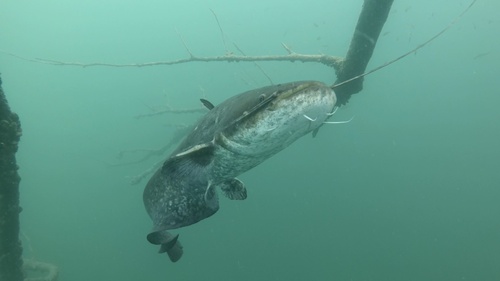
Wels catfish
The Atlantic bluefin tuna (Thunnus thynnus) is a majestic and highly migratory fish species renowned for its size, speed, and commercial value. It plays a crucial role in the marine ecosystem as a top predator. This magnificent fish faces significant challenges due to overfishing, making it a species of conservation concern.
30 80 years
Lifespan
300 - 500 cm
Length
Least Concern
Conservation Status
40 km/h
Swimming speed
Carnivorous, Scavengers
Diet
Local Migration
Migration
Appearance Overview
The Atlantic bluefin tuna is renowned for its large, streamlined body, built for speed and endurance.
Color
Dark metallic blue on top with a silvery underside
Body shape
Torpedo-shaped
Fins
Two dorsal fins, the first retractable; small finlets behind the second dorsal and anal fins
Length
Up to 13 feet (4 meters)
Weight
Up to 2,000 lbs (907 kg)
Diet
Carnivorous, feeding on a variety of fish, squid, crustaceans, and eels.
Feeding Behavior
Highly active predator that hunts by sight, using its speed and agility to chase down prey. They often feed cooperatively, herding and surrounding schools of smaller fish.
Social Behavior
Forms large schools, especially during migration and spawning. These schools can be mixed with other tuna species. They are highly migratory, capable of crossing entire oceans.
Commercial Relevance
Extremely high value, particularly in the Japanese sushi and sashimi market, where a single fish can fetch hundreds of thousands of dollars.
Conservation measures
International fishing quotas, minimum size limits, seasonal closures, and efforts to reduce bycatch. Some organizations promote sustainable aquaculture of bluefin tuna.
Status
Endangered (Varies by population segment; some are considered critically endangered)
Threats
Overfishing (historically and ongoing), illegal fishing, bycatch in other fisheries, and climate change impacting prey distribution and spawning grounds.
Habitat Distribution
Depth Range
0-1,000 meters (typically in the upper few hundred meters)
Geographic Range
Atlantic Ocean, Mediterranean Sea, and formerly the Black Sea
Preferred Environment
Temperate and subtropical waters; primarily pelagic (open ocean), but also found in coastal areas.
Reproduction and Life Cycle
Breeding Habits
Spawns in warm waters, primarily in the Mediterranean Sea and the Gulf of Mexico. Spawning occurs in large aggregations.
Development Stages
Eggs are pelagic (free-floating). Larvae are planktonic and undergo rapid growth. Juveniles form schools and gradually develop into adults.
Fecundity
Females can release up to 30 million eggs per spawning season, depending on their size and condition.
Maturity Age
Matures at 4-8 years in the western Atlantic, and possibly earlier (3-5 years) in the eastern Atlantic and Mediterranean.
Faqs about Wels catfish
How fast can Atlantic bluefin tuna swim?
Atlantic bluefin tuna are among the fastest fish in the ocean, capable of bursts of speed up to 40-60 mph.
How long do Atlantic bluefin tuna live?
They can live for up to 40 years, although this is becoming rarer due to fishing pressure.
Are Atlantic bluefin tuna warm-blooded?
Yes, they are warm-blooded, unlike most fish. They have a specialized circulatory system that allows them to maintain a body temperature higher than the surrounding water, giving them an advantage in colder waters.
Where are Atlantic Bluefin Tuna found?
They are found throughout the Atlantic Ocean and the Mediterranean Sea.
Who manages Atlantic bluefin tuna populations?
Atlantic bluefin tuna populations are managed by international organizations like the International Commission for the Conservation of Atlantic Tunas (ICCAT).
What is the largest recorded Atlantic bluefin tuna?
The record is over 1,496 pounds (679 kg).
Do Atlantic bluefin tuna migrate?
They migrate thousands of miles to reach specific feeding and spawning grounds.
Copyright @ Nature Style Limited. All Rights Reserved.
 English
English